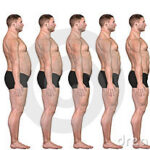Exercising is an important step in the management of any chronic illness such as diabetes mellitus, hypertension , high cholesterol levels and heart disease. Many had been depending upon the gym or outdoor activities for meeting their needs. Due to the Corona Virus, outdoor activities, swimming, and going to the gym has become obsolete.
The Covid period brings about increased stress levels, probably more food intake , being more at home ( indoors) and probably less physically active. This can be a problem for those with chronic illnesses such as diabetes, high cholesterol or high blood pressure. The benefits of exercising include improving the blood flow to the lower half of the body, helps strengthen bones and muscles, delays ageing, improves posture and balance besides controlling the high blood sugar, cholesterol and blood pressure.
However, shame, laziness, being overweight, issues with weather and fear of hypoglycemia are some of the excuses heard to prevent exercising. The commonest excuse is the lack of time. Now, thanks to the Corona Virus, this excuse does not hold good !!!! There may be plenty of time.
Before embarking on a fitness program, especially if one has never done exercises regularly, get a medical checkup done by the doctor which may include an assessment of the heart as well. Though exercises are beneficial, they can cause problems for some with certain problems like eye, kidney, joint, nerve or heart problems.
- The activity must be of at least 150 minutes of moderate aerobic activity a week
- Include different activities so you do not get bored. You can walk, cycle, jog, do water exercises, skip the rope, do the hula hoop, aerobics, zumba dance indoors.
- Remember to start slow and progress slowly.
- Stretching before exercises is very important.
- Allow time for recovery.
- You need not do all the activities at one go. You can conveniently space them out in intervals.
- Be flexible. Do not punish your body.
- Keep a diary to record the progress you made.
- Reassess yourself every month.
- Set new goals
- Push outside your comfort zone as the body gets adjusted to the exercise quite soon and one will notice that the body needs to be pushed further to achieve more.
- Do “listen” to your body. If weak or paining, do give a break and make sure all is okay. The injuries related to exercise too had been detailed in an earlier newsletter.
- It is important to get at least 150 minutes of physical activity done a week. The amount of sweating varies from person to person. An adequate work out must make the heart rate go up to reach 70% of the target heart rate. The target heart rate can be calculated by subtracting your age from 220. There must be not more than 2 consecutive days of inactivity( unless one is sick). One can add some resistance exercises, flexibility and balance training twice or thrice a week. Avoid prolonged sitting by walking around the office cabin every half an hour.
- Walking for ten minutes after a heavy meal helps a lot in digestion as well as has been found to help regulate the sugar levels. Different aims for getting one to exercise are there- such as to look good or to fit into dresses that are 2 sizes smaller, to look good for a reunion of friends…or to be physically fit and for some to reach their target goals in the management of diabetes or high blood pressure.
- Being diabetic , one has to check the sugar levels before starting the exercise. If the sugar levels are more than 300 mg (16 mmol/L) reduce the levels before starting the exercise. Do not inject insulin soon before the exercise or after the exercise as the sugar levels might suddenly go down.
- The mode of exercise will depend on personal preferences, the intensity of exercising will be measured by the heart rate and also the talk test( one should not be able to talk normally while exercising). The exercises must be done to allow at least 150 minutes of moderately intense exercises such as brisk walking, jogging, swimming or cycling. This can be done spaced out over a week or every alternate day to total at least 150 minutes a week. The frequency and duration of exercise are more important than the intensity of the exercises.
- Tai Chi, Yoga, Pilates, skipping rope, stationary cycling, performing household chores, garden work, fishing, sailing,dancing, elastic resistance bands, floor exercises, climbing stairs, jumping, spot running, lunges forward and sideways, and playing the X box all are different forms of exercise.
During these difficult times, many in different walks of life have their own stress and making ends meet. One has to find ways to overcome these, I understand it is easier said than done, but we all must strive to. Exercising forms part of a means to help. It does not have to be a chore or one does not have to sweat it out at the gym- the gyms are closed due to the Covid. The exercise can be any activity one likes doing for a period of time to help improve quality of life. Exercising helps improve sleep, stress levels, blood flow, posture, muscle and eye coordination. This also helps control post meal sugar excursions, controlling blood pressure and cholesterol. Activities such as walking the pet, playing with kids, mall walking, dancing, hula hoop, taking the stairs, meditation, yoga, gardening or yard work, fishing, cleaning the house all contribute to getting active though the scale of intensity may vary between the activities.
There are so many tracking devices which can help in setting goals, planning workouts, motivation, challenging, social support, monitoring progress on daily, weekly or monthly logs. Technology has caught up with lifestyle as much as in various other aspects of life. There are smart watches such as Apple®, FitBit®, Jawbone®,Misfit® and Atlas wrist band® to name a few. There are in-built apps in the modern smartphones that can also help. There is an app called Zombie,Run!® which can convert a simple exercise to a game of survival. There is a world of such apps out in the technology world. The trackers needed may change depending upon what level of activity one desires for.
As mentioned in an earlier newsletter, having a good pair of shoes for sports is essential. Be careful when buying pointed shoes ( narrow toe box) as that will encourage crowding together of the toes with possible corns, callosities, fungal infection between toes and never ending foot discomfort. During the times of Covid, one may resort to purchasing footwear online. The pictures may look great, but a footwear needs to be bought during the end of the day as the feet may swell a bit, one must choose a type in which toes can wriggle about and which fits comfortably. Sometimes the salesperson may coax you into buying one which “looks great” and may be tight, but they insist it will loosen up with time. However every time one wears such footwear may be so traumatic. Always have the feet measurement checked with the Brannock device, a device seen in the shoe shops to measure size, but hardly used! The feet can widen or lengthen with ageing as the foot arches may sag and ligaments holding the bones may weaken. Thus, one foot may be bigger than the other. Checking on a wet footprint will give an idea about the arches of the foot. If the full footprint is seen, it means a flat foot, if the imprint has only the toes and heel it means the arch is very high. The footwear must, ideally, be customized in such cases. Be careful of high heels as it may cause foot pain. Remember to change footwear often after checking for wear and tear. Inspect the sole and insides for sharp objects that may have pierced the sole. Allow the shoes to breathe by rotating them often. Caring of the feet is of prime importance especially when diabetic.
Treadmill is the commonest equipment bought for the home gym and is also one of the commonest equipment used if one frequents the gym. It is often believed that cardio exercises such as running, jogging or cycling help lose weight and also to keep one fit. But, it is worthwhile to note that the low intensity exercises help the body to adapt over a period of time thereby losing its efficiency at reducing the calories burned per minute.
Most of the people buy the treadmill and it soon becomes a dread mill– some use it as a storage space for books and other commodities. Some use the treadmill as a stand for hanging clothes.
There are, however, some points to ponder before buying one.
The advantages of a treadmill:
- Can exercise indoors despite adverse climate
- The smooth cushioned belt is kinder to the joints than when running on hard surfaces outside.
- Those who have no baby sitter or those who cannot leave home can benefit having this at home.
- This can be folded and kept aside if space is being compromised.
- Can listen to audio or see videos while on the treadmill.
- The programmable workout can be done to make the treadmill more interesting
The disadvantages:
- Can be monotonous
- The force of impact while stamping on the belt can cause injuries or pain to the knee, ankle or hip joints for some.
- While running or walking outside, the muscles make small adjustments to improve the coordination and balance which is not there while on the treadmill.
- While walking or running outside, the hamstring muscles ( muscles of the back of thigh and calf) help to propel the body forward. This does not take place while on the treadmill as the machine pulls the body forward.
- There is no wind resistance which can be encountered while exercising outdoors.
- There is nothing to match the downhill running on the treadmill. While running downhill, there has to be good coordination between the muscles of the front of thighs and lower leg muscles.
- Can fall off the treadmill with injuries if not concentrating while on the treadmill
- Adequate footwear is essential as the footwear can wear and tear easily due to the friction.
- Cannot enjoy the sights outside, no fresh air and also change in pace is not possible.
Points to ponder while buying one:
- There are two types- manual and motorized type. The manual needs one to use force to start it moving and some need even an inclination, but once it gets moving, the inclination cannot be adjusted unless you come off the machine. The manual one costs lesser than the motorized one.
- Stand on the belt and see if there is any jerky movement or instability of the base of the machine
- Look for a continuous duty rating of > 1.5 HP
- The belt size must be at least 48” long and 16” wide.
- The control panel must be easily accessible
- There must be an emergency stop button which can be used if there is a mishap.
- Look for the programmable versions available where the pace and inclination can be adjusted.
- Addition of audio and video plug ins cost more
- Water bottle holders are another option.
- Look for the warranty period
- If any other person besides you is planning on using the machine, please buy the high end machine. Those who are heavily built need a sturdy machine.
- Regular servicing or maintenance is needed.
Before using the treadmill, do the following:
- Proper attire including good shoes
- Make sure you are fit to undergo the exercise. If a first timer, make sure the doctor clears you of any heart, eye, kidney or nerve problems. If having back pain, ask the doctor before starting the treadmill.
- Make sure the sugar levels are not too high or too low. Correct the sugar levels before the exercise.
- Carry with you an ID card mentioning you are diabetic. Have fast acting carbohydrates with you( 3 pieces of dates or a granola bar). Carry either orange juice or water which can be had midway between a heavy work out if the work out lasts more than an hour. If you feel dizzy or complain of difficulty breathing, do consult a doctor before continuing.
- Adequate warm up is essential, start slow and then build up the pace or inclination and also stop slowly. Do not suddenly stop unless it is an emergency.
- Leave a space behind while on the belt, it is safer you have some space behind in case you slip.
- Hold on to the side railings while using an inclination or losing balance. It is better not to use the incline.
- Swing arms if possible as in natural walking.
- The short bursts of fast pace followed by slow pace improve the fitness levels as well do not exhaust the body.
- Keep back straight and not slouched over.












